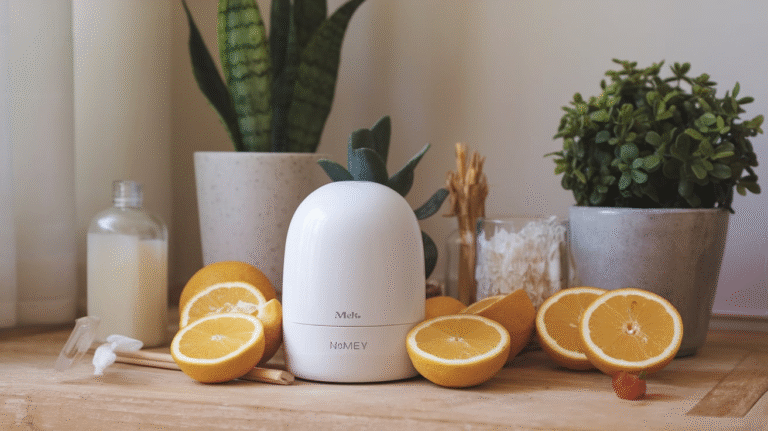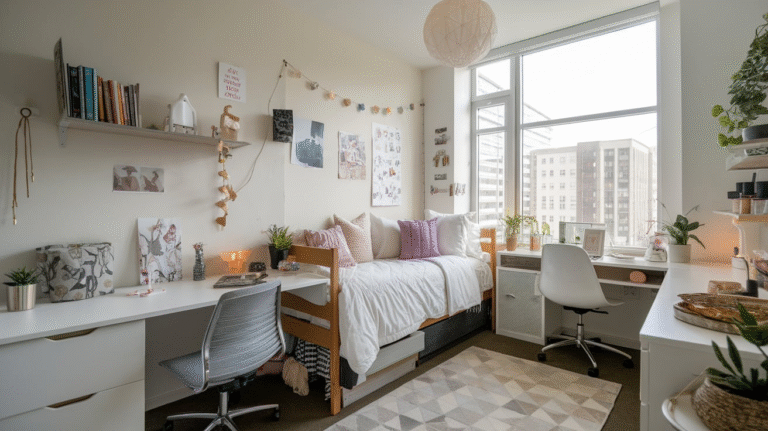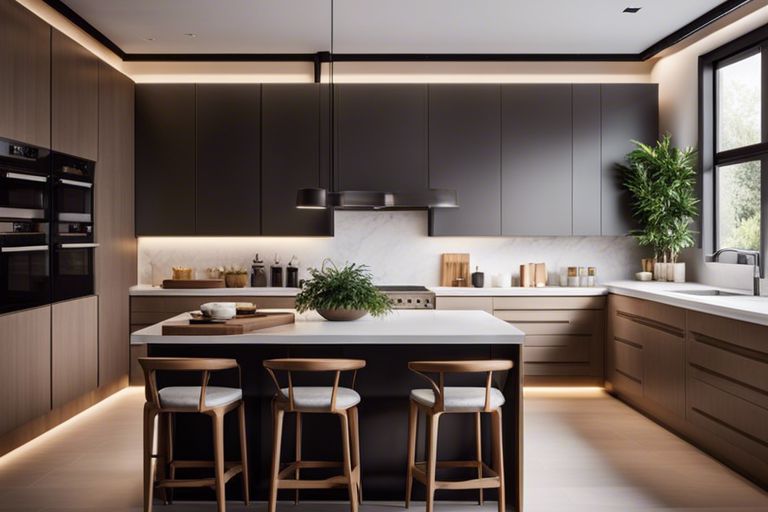20 Home Office Ideas to Boost Your Productivity and Creativity

Working from home has become more than a trend — it’s the new normal for millions.
Whether you’re a full-time remote worker, a freelancer chasing deadlines, or a creative juggling side hustles, your home office plays a key role in how well you think, focus, and get things done.
Let’s skip the vague advice and dig deep into practical, inspiring, and evidence-backed ideas that will transform your home office into a productivity powerhouse and creativity hub.
These aren’t just tips — they’re personal revelations and smart tricks I wish someone had whispered in my ear years ago.
1. Create a Dedicated Workspace (No Couch Allowed)
Don’t work where you nap.
A Harvard Business Review study found that having a distinct workspace helps your brain shift into “work mode,” improving focus and performance.
Even if you live in a studio or share a space, carve out a corner that’s yours and only yours for work.
A fold-down wall desk, a reclaimed closet, or a small writing table by the window can do the trick.
When your brain knows, “This is where the magic happens,” it shows up ready.
2. Invest in an Ergonomic Chair (Your Spine Will Thank You)
You’re likely spending 6–9 hours a day in that chair. Skimping here is like driving cross-country on a wooden bench.
According to the American Chiropractic Association, back pain is the leading cause of disability in adults under 45, and poor seating is a major culprit.
Look for a chair with lumbar support, adjustable armrests, and a seat that encourages movement.
Personally, switching to a high-quality ergonomic chair reduced my end-of-day fatigue dramatically — no more lower-back groans or neck cricks.
3. Use Natural Light Strategically
Natural light does more than look good on Zoom.
A Cornell study found that natural light boosts productivity by 84%, reduces eye strain, and improves mood.
If possible, position your desk near a window but avoid direct glare on your screen.
Use sheer curtains to soften harsh rays and mirror placement to bounce daylight around the room.
Not enough windows? A full-spectrum daylight lamp can mimic the real thing beautifully.
4. Add Plants — They’re Productivity Ninjas in Disguise
A leafy sidekick can boost more than your décor.
Research from the University of Exeter shows that workers in green environments are 15% more productive and feel more engaged.
Choose low-maintenance plants like snake plants, pothos, or peace lilies.
They clean the air, regulate humidity, and give your space that fresh, alive feel — like a tiny jungle cheering you on.
5. Upgrade Your Desk (Size and Function Matter)
Your desk is your cockpit. Whether you’re writing, designing, coding, or planning world domination, the surface should fit your needs.
If you often spread out papers or gear, choose a wide surface. If space is tight, consider a wall-mounted or L-shaped desk.
Want to boost energy and circulation? A height-adjustable standing desk can change your posture throughout the day, reducing fatigue and improving focus.
I made the switch to a standing desk last year and instantly noticed I didn’t get that 3 p.m. slump as often. Standing while brainstorming? Game changer.
6. Layer Your Lighting
Overhead lighting is a productivity killer. It’s either too dim or blinding. You want a layered approach:
- Ambient lighting to softly illuminate the room
- Task lighting (like a desk lamp) for focused work
- Accent lighting to highlight decor or add mood
Bonus tip: Use warm LED bulbs (2700K–3000K) in the evening to signal your brain it’s time to wind down. Cooler light in the morning (5000K) can boost alertness.
7. Declutter Your Desk (Clutter Equals Chaos)
We’ve all heard “cluttered desk, cluttered mind.”
And it’s true — studies show that visual clutter increases cognitive overload, making it harder to process information and make decisions.
Get rid of what you don’t need on your desk. Keep only the essentials in sight — laptop, notebook, pen, lamp, water bottle.
Use drawer organizers, wall-mounted file holders, and under-desk cable trays to hide the mess.
I once had 14 pens, 6 mugs, and 3 broken headphones scattered across my desk. After one ruthless decluttering session, my focus jumped. Coincidence? Nope.
8. Sound Matters — Use Noise to Your Advantage
Silence can be golden, but sometimes it’s the enemy of focus.
Studies by the Journal of Cognitive Neuroscience show that moderate ambient noise (like café sounds or rain) can improve creativity by enhancing abstract thinking.
Experiment with:
- Noise-canceling headphones for silence or focus
- White noise or ambient sound apps like Noisli or Brain.fm
- Instrumental music if lyrics distract you
Personally, I love lo-fi beats when I write. It’s like background magic for my brain.
9. Make It Personal, but Not Distracting
Your workspace should inspire you — but not distract. Hang art you love, photos of people who make you smile, or a corkboard filled with affirmations and ideas.
Avoid turning your desk into a mini-museum. One or two personal items is the sweet spot. Too many, and your brain starts wandering.
One well-placed photo of my daughter reminds me why I’m working hard — without turning into a rabbit hole of nostalgia.
10. Embrace a Color Palette That Works With Your Brain
Colors impact emotion and focus.
A study from the University of Texas found that blue and green improve focus, while yellow boosts creativity, and red enhances detail-oriented tasks.
Choose colors based on your work needs:
- Cool tones (blue/green) for calm and focus
- Warm tones (yellow/orange) for energy and creativity
- Neutral tones (beige/white/gray) for clean minimalism
I painted one accent wall in deep sage green — it feels grounded, calm, and a bit luxurious.
11. Optimize Tech and Cables (Or They’ll Drive You Nuts)
Loose cables, slow Wi-Fi, and cluttered desktops sap mental energy. Organize your tech setup:
- Use a monitor riser to elevate screens to eye level
- Invest in a USB hub to reduce port juggling
- Use Velcro cable ties and sleeves for neatness
- Add a backup drive or cloud system for peace of mind
Tech stress is real. I once lost an entire morning to a dying charger and a faulty port.
Now I have backups and systems in place — and mornings are much more peaceful.
12. Add a Whiteboard or Corkboard
These aren’t just for classrooms. A whiteboard or corkboard can become your idea playground, to-do tracker, or mood board.
I keep a whiteboard right behind my monitor. On it? Weekly goals, quick reminders, and random ideas that pop up mid-call.
It’s my brain’s external hard drive.
13. Use a Timer — The Pomodoro Technique Still Works
The Pomodoro Technique isn’t new, but it’s golden: 25 minutes of work, 5-minute break. Repeat.
Why it works? It keeps your brain fresh, reduces procrastination, and gives you clear mental sprints.
Use a physical timer or apps like Focus Booster or TomatoTimer. You’ll be shocked how much you get done in two focused Pomodoros.
14. Separate Work and Life — Even Physically
Blurring the lines between work and rest is dangerous. Your brain needs boundaries.
If your desk is in your bedroom or living area, use curtains, screens, or bookshelves to create a divide. Log off at a set time.
Close your laptop. Physically walk away.
I light a specific candle at the start of work and blow it out when I’m done. It’s a tiny ritual, but it cues my brain to shift gears.
15. Keep Office Supplies Within Reach
Every time you get up to grab a stapler or sticky note, it’s an interruption. Keep your most-used supplies within arm’s reach — pens, paper, charger, glasses.
Use drawer inserts or desktop caddies to keep things tidy. You’re not lazy — you’re just optimizing flow. Fewer interruptions = deeper work.
16. Have a “Thinking Chair” or Corner
Your desk is for doing. But sometimes, creativity needs space. Add a reading chair, floor cushion, or beanbag for thinking, daydreaming, or reading.
Some of my best ideas came not while typing, but while lounging sideways in my thinking chair, notebook in hand. Giving your brain breathing room is powerful.
17. Use Scent to Trigger Focus
Smell is directly tied to memory and emotion. Certain scents can improve alertness and focus.
Try:
- Peppermint for energy
- Lemon for concentration
- Lavender for calm during stress
I use a diffuser with peppermint oil on tough deadline days. It’s like espresso for my brain.
18. Don’t Forget Temperature Comfort
Too hot? You’ll be sluggish. Too cold? You’ll be distracted. The ideal productivity temperature is around 22°C (72°F) according to ASHRAE studies.
Use a desk fan, space heater, or adjust layers to stay comfortable. Comfort matters more than we admit.
19. Keep a Daily Desk Ritual
Small rituals create rhythm. They tell your brain, “Now we work.”
Ideas:
- Morning coffee in your favorite mug
- Midday stretch and music break
- 5-minute cleanup at end of day
I clean my desk each night, so every morning feels like a fresh start. It’s psychological magic.
20. Keep Evolving Your Setup
Your needs change. Your setup should too. Reevaluate every few months:
- Does your chair still feel great?
- Do you need more light?
- Are your tools working for you?
Don’t fall into the trap of “set it and forget it.” Keep iterating. Your future self will thank you.
In summary — your home office should serve you, not stress you. It should be the launchpad for your best work, your wildest ideas, and your calmest focus.
Whether you’re optimizing a spare room, a dining table corner, or a backyard shed, these ideas work because they’re grounded in how we think, feel, and function best.
Create with intention. Work with flow. Rest with ease. That’s the home office trifecta.
Let your space support your greatness — you’ve got work to do.






